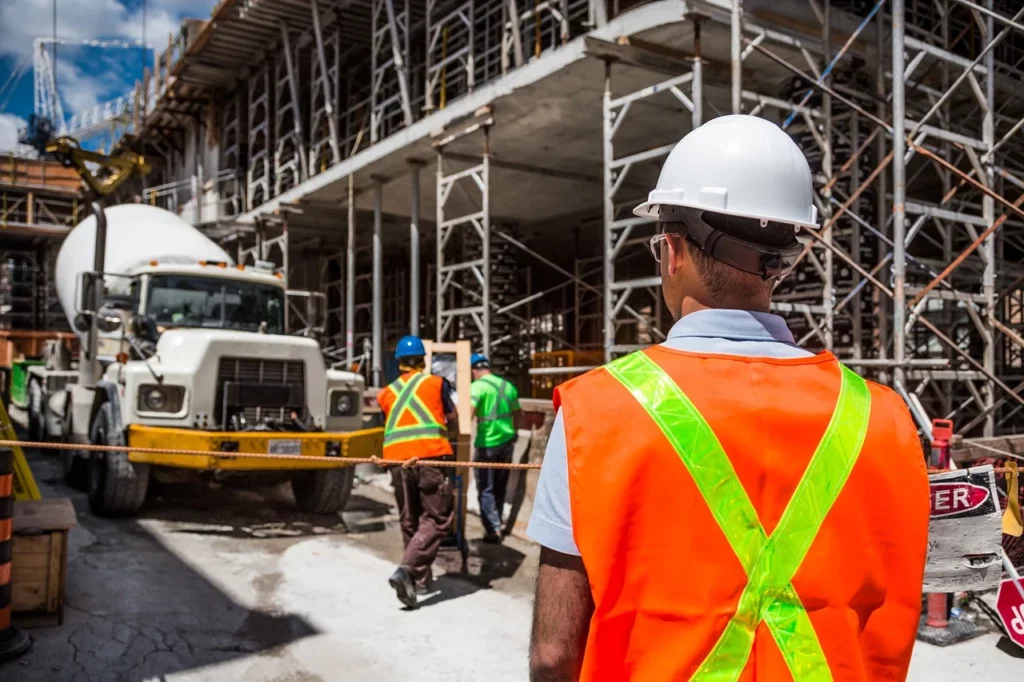Construction sites need to be organised such that the dangers connected with the mobility of people and vehicles are reduced as much as possible. This section explains how this objective can be accomplished most effectively, including limiting the number of vehicles on-site at any given time, controlling access to the site, displaying appropriate signage, providing a schematic site plan, enforcing site rules and a site speed limit, and separating pedestrians and vehicles.
Separation
The establishment of vehicle and footpaths that are free from danger is an essential component of site traffic management. Although people and automobiles should have total separation from one another, this is not always possible in practise. Footbridges, tunnels, and distinct walkways are some types of infrastructure that are good instances of total segregation.
In most cases, collisions between automobiles and pedestrians are brought on by a lack of pedestrian separation, inadequate signs or barriers at intersections, inadequate illumination, blind corners, or excessive vehicle speed. In areas where there is a requirement for pathways to be shared, the pedestrian walkway can be separated from the vehicular route by means such as fences, barriers, or kerbs. You could also use lights, supplied by a top Canadian Traffic Manufacturer.
It is recommended that both the number of vehicle movements and the number of vehicles present on the site at any given time be kept to a minimum.
All visitors should be required to check in at a site access control point, which is often the site office. This allows access to the site itself to be managed and regulated. They ought to be directed to the site office or any other permanent control or reporting-in point by means of suitable signs. For the convenience of all visitors, the site office has to have at least one reliable access point. Access to the location must be restricted to just those who have been authorised.
At the entrance to the site, there should be a schematic site plan that may be used to help with navigation. For the safety of delivery trucks that are not familiar with the site’s layout, the speed restriction for the site must be made abundantly clear, and suitable signposting ought to be provided
The process of loading and unloading
When it comes to vehicles, one of the most dangerous activities is loading and unloading cargo. It is essential to give careful consideration to both the location and layout of loading and unloading spaces. They should be located in a way that minimises the movement of vehicles, particularly that of fork lift trucks and other loading vehicles, and they should be located in a way that keeps them away from things like overhead power wires, etc.
It is important to avoid having slopes that are too steep, especially in locations where lift trucks are used. It is recommended to take into consideration the usage of one-way systems and drive-through loading and unloading facilities.
Ideally, pedestrians should not be allowed in loading zones; however, if this is not possible, there should be at least one pedestrian departure path that is safe. The number of people walking around in the area should be kept to a minimum by excluding staff who are not required from entering the loading and unloading area.

